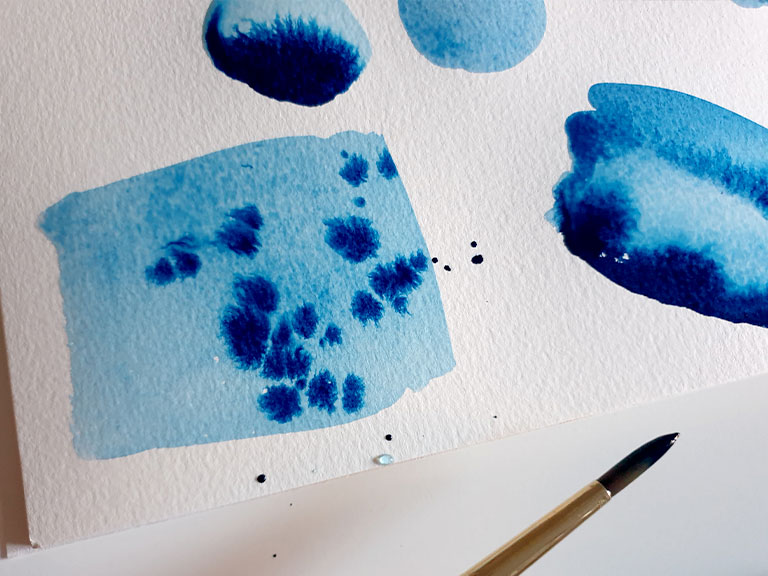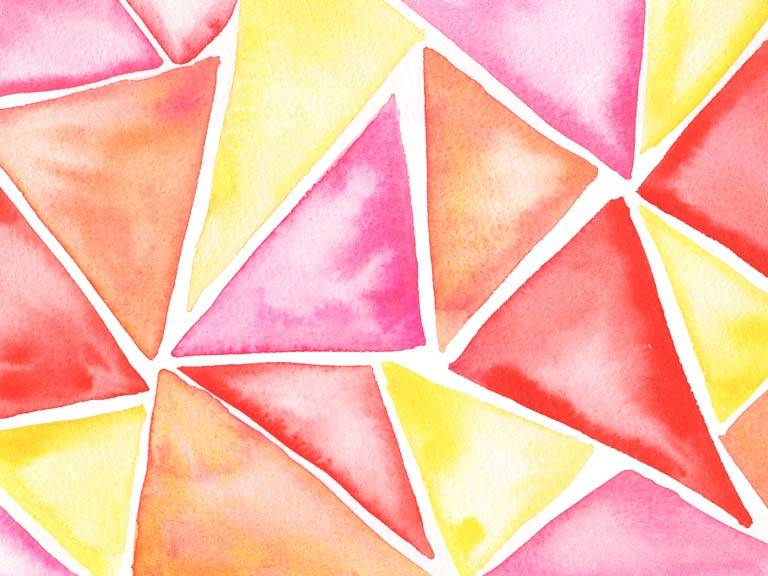How much water should I use? This is one of the most common questions that beginners have about watercolour painting. And it’s not as simple as it seems.
You’re going to be annoyed about this, but in truth there’s no easy right answer to how much water you need. This is because water is used to lighten your colours, so it depends how light you want to go.
And then other factors that you need to take into account, such as what effects are you trying to get? What paper are you using? What brush are you using?
It’s a lot of questions in one but here’s how you can work out the answer!
Why do watercolours use water?
Watercolours are made up of colour pigments that are water soluble. That means they dissolve in water. Essentially, the watercolours are dry pigment, and the water is used as a vehicle for the pigments. Rehydrate the paint to create a flowing mixture, apply it to the page as liquid paint. Then the water evaporates, the paint dries and you’re left with a finished painting.
But this means the water is vital to the painting, as it takes dry pigment and makes it into paint. And this is where we need to look at value.
So how much water should I use for watercolour?
As a general rule, you need more water than you think! The best way to think about it is this – you want enough water to create a fluid paint mixture that can be easily spread on the paper. And it needs to remain wet for a few minutes so you have time to blend or add wet-on-wet effects.
Most of the paint mixture on your brush should actually be water. You only need a small amount of paint in the mixture.
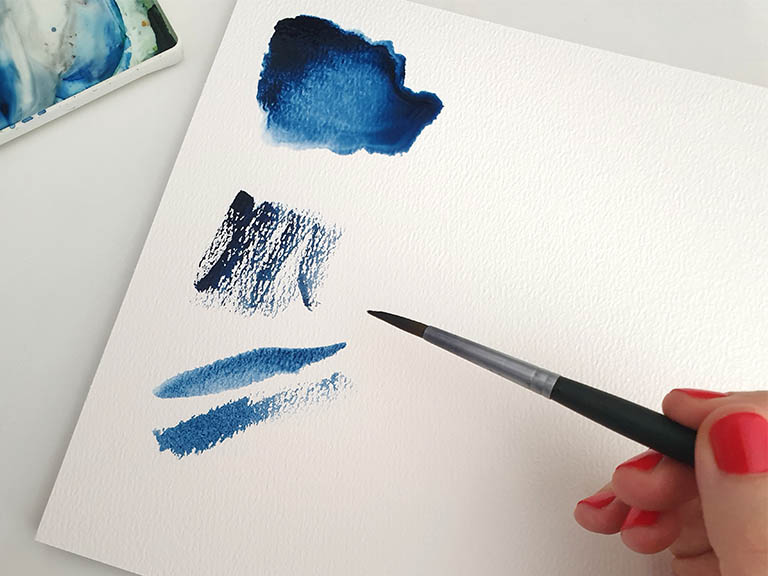
If you don’t have enough water
If you don’t use enough water, your brush will be too dry. There are two ways to spot this – the bristles on your brush will not sit smooth and will look dry.
And when you try and create a stroke on the paper, you won’t get a smooth application. Your brush will dry out in the middle of the stroke, and you’ll get a jagged effect where it drags across the paper surface. The colour will look uneven, and it will dry in patches before you have time to finish.
If these things are true, you need to use more water.
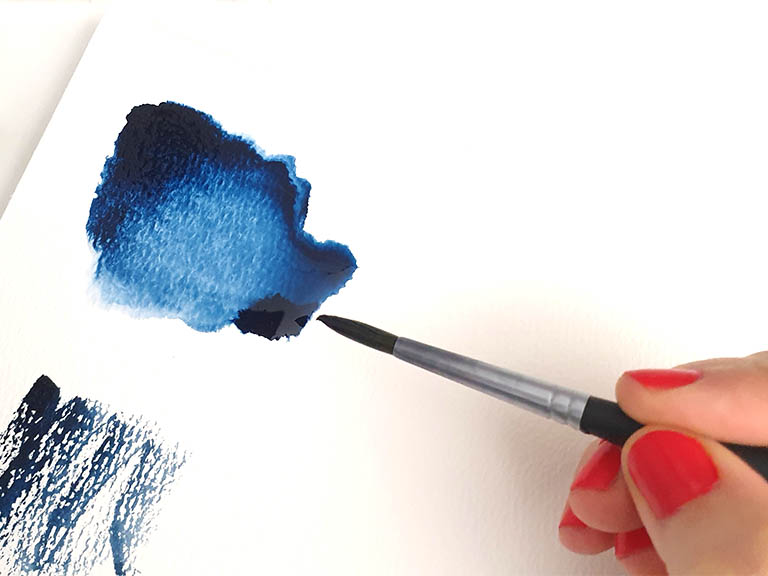
If you have too much water
On the opposite side, if you have too much water on your brush and it’s almost dripping off, this is likely to be too much water. You may drip on the paper and you’ll probably end up creating puddles as you paint, which can give you a patchy effect as it dries.
This is because the puddles take much longer to dry than the surrounding paint, which creates ‘hard edges’ around the puddle and makes your work look patchy.
The easiest way to check for puddles is to tilt your paper towards the light – any puddles will be highlighted as the water moves, and you can pick up the excess water with a dry brush or a piece of tissue.
Creative watery effects are not wrong!
It’s important to note that puddles, patches and even dry brush techniques are not necessarily wrong or bad. Lots of artists use them to spectacular effect, but it’s about controlling the water so you get these effects on purpose. The water is a key part of watercolour painting, and hard edges or blooms are not mistakes, they’re part of the fun!
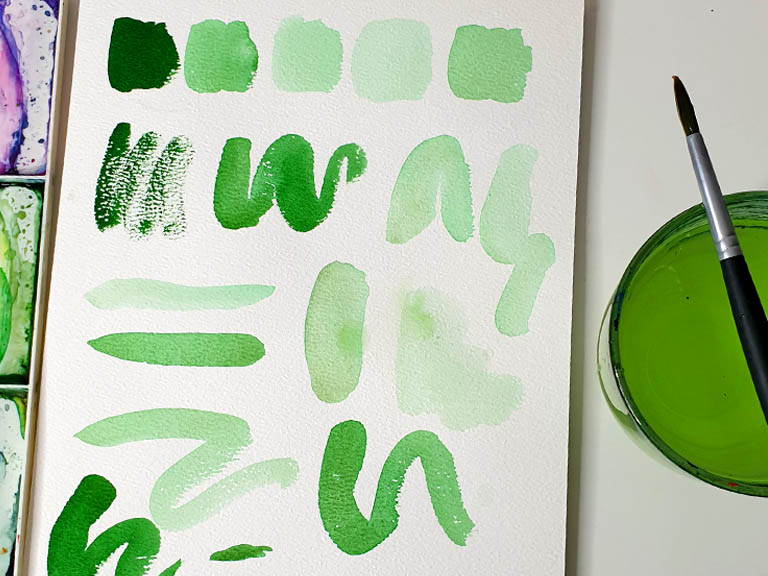
The right amount of water to use with watercolour
As you can see, it’s much easier to diagnose too much or too little water. The right amount of water is simply in the middle! Essentially, you’re looking for a watery mix using more water than paint, or at least half and half.
Your brush should be thoroughly wet but not dripping, and capable of creating a smooth stroke without immediately drying out. It should feel consistent to paint with and glide across the paper without a sense of dragging or pulling as it dries out. You should be able to finish your stroke without having to go back and refill all the time. And yet it shouldn’t be creating sopping great puddles throughout your work.
After you’ve been painting watercolour a while, water control will become automatic. You’ll know exactly when there’s too much water on your brush, and you’ll be able to fix it without really thinking.
What is value in watercolour?
Value refers to the lightness or darkness of a colour. A very dark value is a deep, rich colour. And a light value is a pale, translucent colour.
In other paints, you add white to make colours lighter. But in watercolour, you add more water. The more diluted your mixture, the lighter the colour will be.
If you have a thick mixture with a little water, and a lot of pigment, you’ll have a dark value. And vice versa, if you have a little pigment in a lot of water, you’ll have a diluted, pale colour.
That’s why there’s no easy way to describe how much water you need – it depends on what value you’re aiming for!
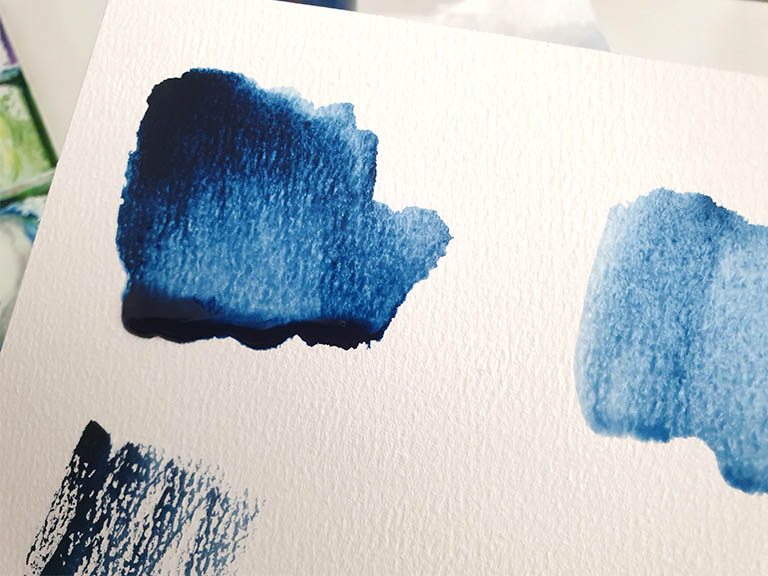
What else affects how much water to use
There are other factors that can change how much water you need for watercolour painting.
Watercolour paper
Paper can have a huge impact on your water control. Rough textured paper needs much more water to create smooth strokes than cold press.
And cotton paper is often easier to control water on than cheaper cellulose paper. That’s because the cellulose paper dries much faster, meaning more likelihood of patches and hard edges.
Cotton paper stays wet for longer, allowing for more even drying and more time to pick up puddles. It often has a smoother effect as it dries.
Read my ultimate guide to watercolour paper for more tips on what to look out for.
Watercolour brushes
Likewise, brushes can have an impact. Big brushes, mop brushes and those made with real animal hair absorb more water, meaning you probably need to use more in your mixture.
Smaller watercolour brushes simply hold less water because they have fewer bristles. It means they can only make smaller, shorter strokes without drying out. They’re great for details but not for covering large areas of paper.
I really recommend testing larger watercolour brushes if you feel like you’re using plenty of water but find your strokes are still drying out regularly.
Paint types
And finally the watercolour paints you’re using too! Dry pan paints need more water to activate them, while tubes and liquid watercolours are already wet and need less dilution.
The importance of clean water
Now you know how much water to use in watercolour painting, it’s easy to see why clean water is so important! Water makes up the majority of the mixture, and if you’re using dirty brown water, this will make your colours look dull and flat too.
Most watercolour artists paint with two cups of water. I use one to wash off, and mix, warm colours like yellows and reds. And the other is my cool cup, washing off and mixing blues and greens. This ensures they don’t mix to create muddy brown, keeping colours vibrant.
The other method is the dirty-clean cups, where you use one cup for washing off dirty brushes, and the other for picking up clean water to mix new colours. This ensures no contamination – which one you use is down to personal preference.
I hope this guide helps you work out how much water you need to use in your watercolour painting!
Download my free watercolour supply guide
Feeling overwhelmed and confused by watercolour paints, papers and brushes? Download my free guide filled with insider info, including a list of good supplies for every budget, and my complete supply list!
